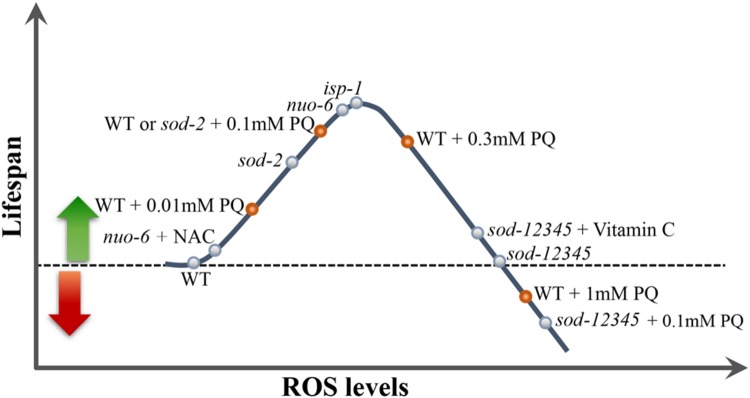FIGURE 1.
The inverted U-shaped relationship between ROS and lifespan. Increasing ROS levels in animals in which ROS levels are lower than the optimum for longevity results in an increase of lifespan. Beyond that optimal level, further increases have less effect and finally decrease animal lifespan when ROS become too elevated. Note that such a relationship implies that both pro-oxidants and antioxidants can increase or decrease lifespan depending on the genotype of the animals, but possibly depending also on the exact cellular or sub-cellular target of any particular redox-active compound. See Figure 2 for schematic representation of the lifespan data of some of the mutants plotted on the curve.

